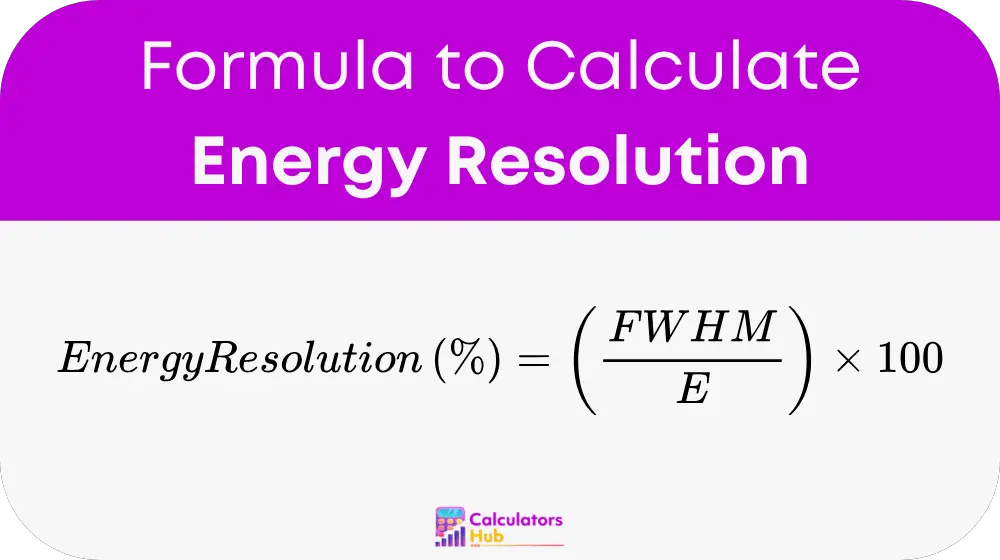The Energy Resolution Calculator is use to determine the precision of a measurement system in distinguishing energy peaks in a spectrum. It plays a critical role in fields like nuclear physics, spectroscopy, and material science, where accurate identification of energy levels is essential. By calculating the energy resolution, users can assess how sharply a detector system responds to a particular energy input. This calculator belongs to the Spectral Analysis and Detector Performance Calculator category.
Understanding energy resolution helps optimize detectors for better accuracy, ensuring that measurements of particles, radiation, or spectral lines are as clear and distinct as possible.
Formula of Energy Resolution Calculator

Detailed Breakdown:
FWHM (Full Width at Half Maximum)
This is the width of a spectral peak measured at half of its maximum height. It represents the spread or sharpness of the energy peak and is given in the same unit as energy, such as keV or MeV.
E (Energy of the Peak)
This is the energy value at the center of the peak being measure. It should be in the same unit as FWHM.
By dividing FWHM by the peak energy and multiplying by 100, you get a percentage value that indicates how well the system can separate close energy levels. Lower percentages mean better resolution.
Quick Reference Table
The following table helps users quickly interpret common resolution values for standard detectors and energy levels:
| FWHM (keV) | Energy (keV) | Energy Resolution (%) |
|---|---|---|
| 1.5 | 60 | 2.5 |
| 2.0 | 100 | 2.0 |
| 2.5 | 125 | 2.0 |
| 3.0 | 150 | 2.0 |
| 5.0 | 500 | 1.0 |
This table shows that even as energy increases, maintaining a low FWHM keeps the resolution high. It is useful for evaluating detector performance benchmarks.
Example of Energy Resolution Calculator
Suppose you are analyzing a radiation detector that measures a spectral peak at 200 keV with a FWHM of 4 keV.
Step 1:
Use the formula
Energy Resolution (%) = (FWHM / E) × 100
= (4 / 200) × 100 = 2%
The system has an energy resolution of 2%, which indicates good precision for separating nearby peaks at that energy level.
Most Common FAQs
For high-performance detectors, a resolution under 2% is considered very good. Systems used in basic applications may have higher values but still deliver useful results.
It determines the clarity of spectral data. High resolution ensures that peaks from different sources do not overlap, which is crucial in identifying specific elements or isotopes.
Yes. Just ensure that both FWHM and energy values are in the same unit—whether keV, MeV, or others—to get accurate results.